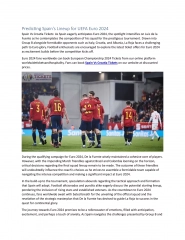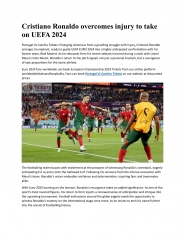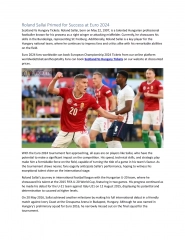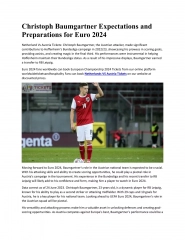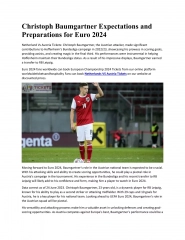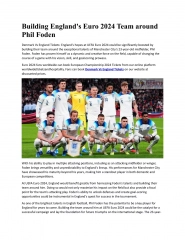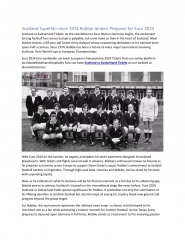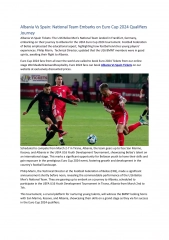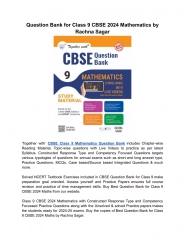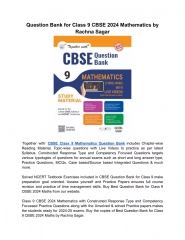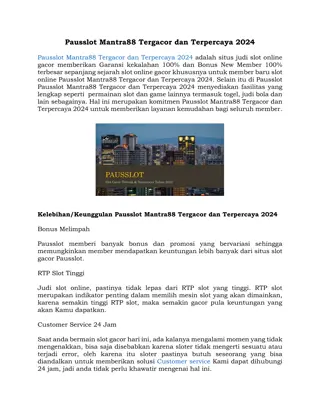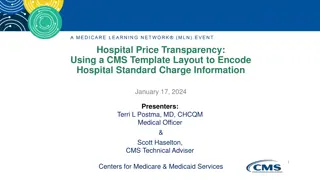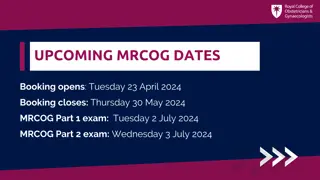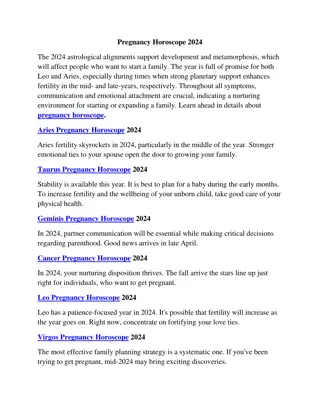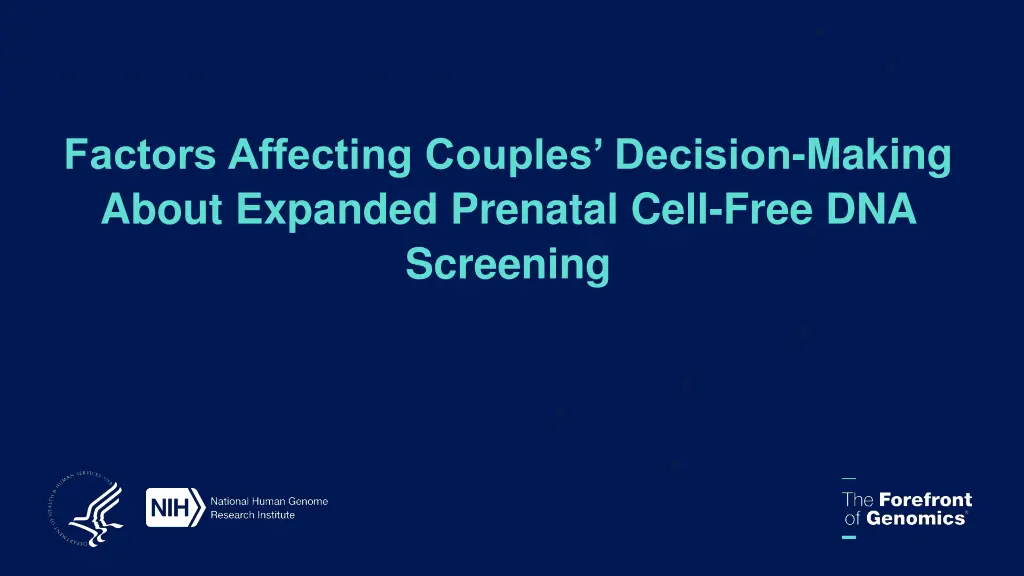
Factors Influencing Couples' Decision-Making on Prenatal Genetic Testing
Explore factors affecting couples' decision-making on expanded prenatal cell-free DNA screening, including ethical challenges, technological advancements, and policy projects. Learn about current evidence and preferences regarding prenatal whole-genome sequencing.
Uploaded on | 0 Views
Download Presentation

Please find below an Image/Link to download the presentation.
The content on the website is provided AS IS for your information and personal use only. It may not be sold, licensed, or shared on other websites without obtaining consent from the author. If you encounter any issues during the download, it is possible that the publisher has removed the file from their server.
You are allowed to download the files provided on this website for personal or commercial use, subject to the condition that they are used lawfully. All files are the property of their respective owners.
The content on the website is provided AS IS for your information and personal use only. It may not be sold, licensed, or shared on other websites without obtaining consent from the author.
E N D
Presentation Transcript
Factors Affecting Couples Decision-Making About Expanded Prenatal Cell-Free DNA Screening
Disclaimer These arguments are those of the presenter and do not necessarily reflect the official views and policies of DHHS, NIH, or NHGRI. 2
Prenatal Genetic Testing Options Amniocentesis 16 weeks Chorionic villus sampling 10-13 weeks NIPT 10 weeks (trisomies)
Prenatal Whole-Genome Sequencing Has been demonstrated; not yet clinically available Can be done as early as 7 weeks Can produce a wide range of genetic information Single-gene disorders Adult onset disease Non-medical information 5
High Likelihood of Widespread Adoption Plummeting cost of sequencing Historical trend toward more comprehensive prenatal testing Strong market forces Only technological/economic scaling barriers remain 6
A Looming Ethical Challenge Future autonomy Genetic determinism Expressivist impact Backdoor eugenics (Non)-Directiveness Legal backlash RBAB Physician speech Extemporaneous vs. evidentiary adoption of new technologies
Which categories of information would you want from PWGS? Sullivan HK, Bayefsky M, Wakim P, Huddleston, K, Biesecker BB, Hull SC, BerkmanBE. Noninvasive Prenatal Whole Genome Sequencing: Pregnant Women s Views and Preferences. Obstetrics and Gynecology 133:525-532 (2019). 9
Current Evidence Pregnant persons and their partners value having the choice to learn about their fetus s genetic risks Hold similar views about limited NIPT/cfDNA screening (e.g., trisomies) Very limited investigation into partners interest in expanded categories of prenatal genetic information 11
Research Questions How do the characteristics (timing of disease onset, disease severity, treatability, reliability of results) of expanded NIPT and its tested conditions impact intended parents interest in pursuing testing? How much variability exists within couples when making these types of decisions? Are there any predictors of concordance/discordance? How would couples navigate potential disagreements?
Study Population U.S. adult couples of childbearing age who are pregnant or are intending to become pregnant within the next 18 months Partner must be willing to participate 247 dyads (494 total) Convenience sample from Qualtrics of women who are pregnant or are trying to conceive Quotas for racial/ethnic cohorts that track recent census data to approximate a representative U.S. population sample
Survey Design Pregnant person begins survey Background information, consent 8 randomly drawn vignettes from 108 potential options Predict partner s views, reasons for seeking or not Doctor directiveness, cost, ability to terminate, opinions Questions about how will make decisions with partner Demographics Transition to partner Same 8 vignettes in same order
Vignette Template Please imagine that you and your partner are expecting and that your doctor is offering you the following test. A test for a [disease severity] that starts [timing of onset]. This disease is [treatability]. The test for this condition is [reliability].
Predicted probability of seeking a prenatal genetic test per variable Figure 1: Effect of vignette levels on willingness to seek a predictive genetic test
Reason For/Against Testing All strongly endorsed as important reasons (at least moderately strong) Strongest reason for testing Risk of familial disease (94.9%/94.9%) Prepare financially, medically, emotionally (95%/94.3%) Strongest reason against testing Never consider termination based on genetics (81.6%/75.7%) Concern about stress and anxiety (71.2%/67.5%) To inform decisions on pregnancy termination Religious (87.1%/87.4%) Never consider pregnancy termination (90.7%/92.8%) 18
Partner Concordance 87.9% agreement 78.8% yes/yes (1,557/1,976) 9.1% no/no (180/1,976) On average, partners agreed on 7/8 vignettes 63.6% agreed on 8/8 No statistical differences related to severity, treatability, timing of onset or predictiveness Moderate concordance k=0.5311, 95% CI [0.4455, 0.6167] 20
Views on Joint Decision-Making with Partner 21
Willingness to Seek Testing Some significant differentiation by variables/levels Earlier onset, treatable, higher severity But consistent with previous studies, pregnant persons and their partners are highly information seeking Reflects a broader acceptance of increasing data generation and collection 23
Willingness to Seek Testing High desire for early onset information is inconsistent with the academic concept of a right to an open future If lack of consideration is the root cause, more pre-test counseling is indicated If this result reflects a normative disagreement with the concept, it might be time to (continue) revisiting its importance 24
Willingness to Seek Testing Self-reported religiosity was associated with higher likelihood of seeking testing And religious people or those who indicated that they would never terminate were fairly likely to say that it was important to learn genetic information for the purpose of making termination decisions Would availability of expanded prenatal testing shift views on acceptable reproductive choices? Are views on pregnancy termination firmer in the abstract than in concrete situations? As new categories of information become available, it will be important to examine who is seeking which kinds of information, and why Existing literature that has focused on a limited number of early-onset disease (e.g., Down Syndrome) will need to be reevaluated and expanded 25
Concordance The clinical encounter where couples will have to decide which kinds of prenatal genetic information to seek could be ethically challenging, particularly if couples disagree ~90% concordance is higher than hypothesized but still leaves a substantial set of situations that could become fraught Particularly given that there was lower concordance about the reasons for/against testing E.g., partners half as likely to endorse the importance of stress/anxiety 26
How Will Couples Navigate this Complicated Decision-making Process Extensive menu of options? See Chen and Wasserman Non-directive genetic counseling? But our findings suggest that couples want substantive guidance Three bins Recommended Not recommended Neutrally presented 27
Conclusion PWGS is coming soon Data from projects like this one can inform thoughtful evidentiary implementation of an ethically complicated new technology Reexamine long-held ethical views Non-directiveness Right to an open future More research is needed to explore why people who are seemingly against pregnancy termination might be so interested in learning prenatal genetic information 28
Acknowledgments Kelsey Mumford Saskia Hendriks Skye Miner Chloe Huelsnitz Paul Wakim Mumford K, Hendriks S, Miner S, Huelsnitz CO, Wakim P, Berkman BE. Factors Affecting Couples Decision Making about Expanded Prenatal Cell-free DNA Testing. Genetics in Medicine Open 2 (2024). 29
Thank you berkmanbe@mail.nih.gov 30




